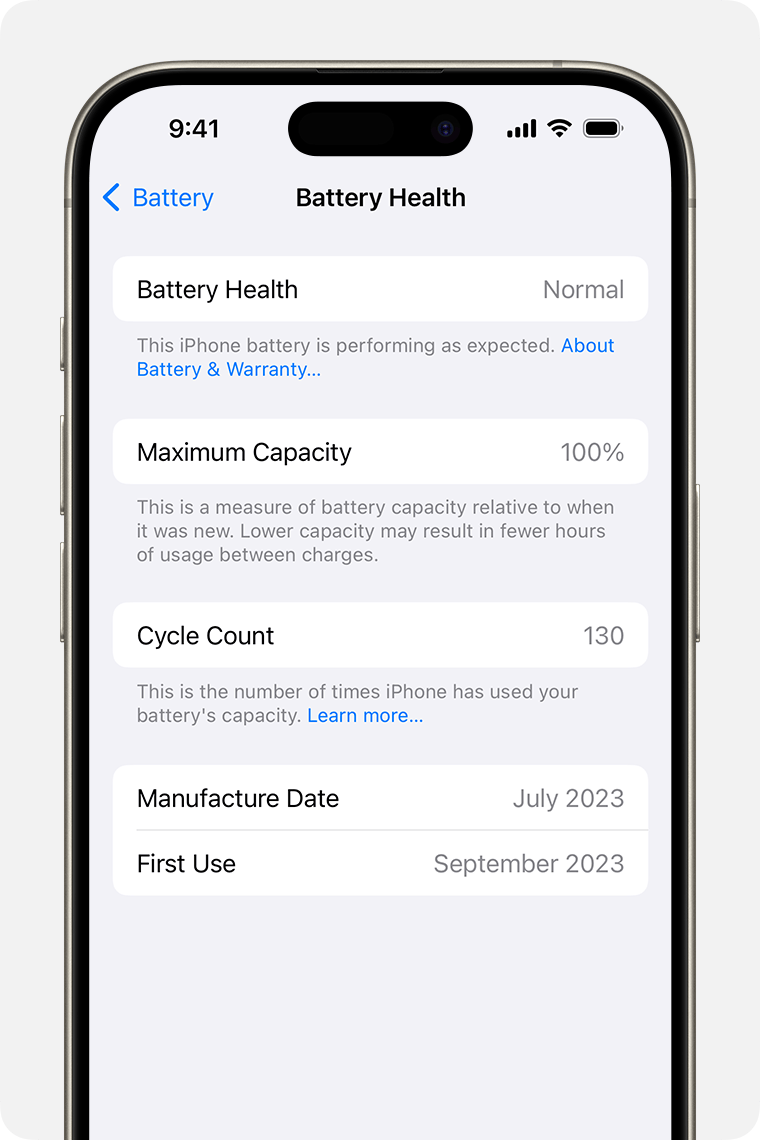About the battery and performance of iPhone 11 and later
Find out about the built-in software and hardware system that iPhone 11 models and later use to reduce performance effects as your battery chemically ages.
About performance as batteries age
The software and hardware system built into your iPhone is automatic, always-on and works to provide the best possible performance as battery aging occurs over time. The power needs of your iPhone are dynamically monitored, and performance is managed so that it can address these needs in real time. The system allows your iPhone to reduce performance effects from battery aging.
While performance effects are reduced as much as possible, battery aging might still eventually lead to noticeable, possibly temporary, effects. Depending on the battery state, level of charge and the tasks that your iPhone is handling, examples might include longer app launch times, lower frame rates, increased processing times, reduced wireless-data throughput, backlight dimming or lower speaker volume. During the most extreme cases, the camera flash or other camera features might be temporarily disabled.
Get battery information with iPhone 15 models and later
With iPhone 15 models and later with iOS 17.4 and later, you can see your battery health, the battery's maximum capacity, if a battery replacement is recommended, the cycle count, when your battery was manufactured and when it was first used. Go to Settings > Battery > Battery Health.

Check battery health on your iPhone 11, 12, 13 or 14 model
All rechargeable batteries are consumables and have a limited lifespan. Eventually their capacity and performance decline and they need to be replaced. To find out more about your iPhone battery health and if a battery replacement is recommended, go to Settings > Battery > Battery Health & Charging.

Learn more
If your iPhone performance has been affected by an aged battery and you would like to get help with a battery replacement, contact Apple Support for service options.
Batteries of iPhone 14 models and earlier are designed to retain 80 per cent of their original capacity at 500 complete charge cycles under ideal conditions.* Batteries of iPhone 15 models and later are designed to retain 80 per cent of their original capacity at 1000 complete charge cycles under ideal conditions.* With all models, the exact capacity percentage depends on how the devices are regularly used and charged. The one-year warranty includes service coverage for a defective battery in addition to rights provided under local consumer laws. Find out more about the charge cycles of lithium-ion batteries.
Batteries are a complex technology and a number of variables contribute to battery performance. Find out more about the maximum battery capacity of your iPhone and when battery service is recommended.
Find out what to do if you think the battery in your iPhone is draining too quickly.
* When you use your iPhone, its battery goes through charge cycles. You complete one charge cycle when you’ve used an amount that represents 100 per cent of your battery’s capacity. A complete charge cycle is normalised between 80 per cent and 100 per cent of original capacity to account for expected diminishing battery capacity over time.